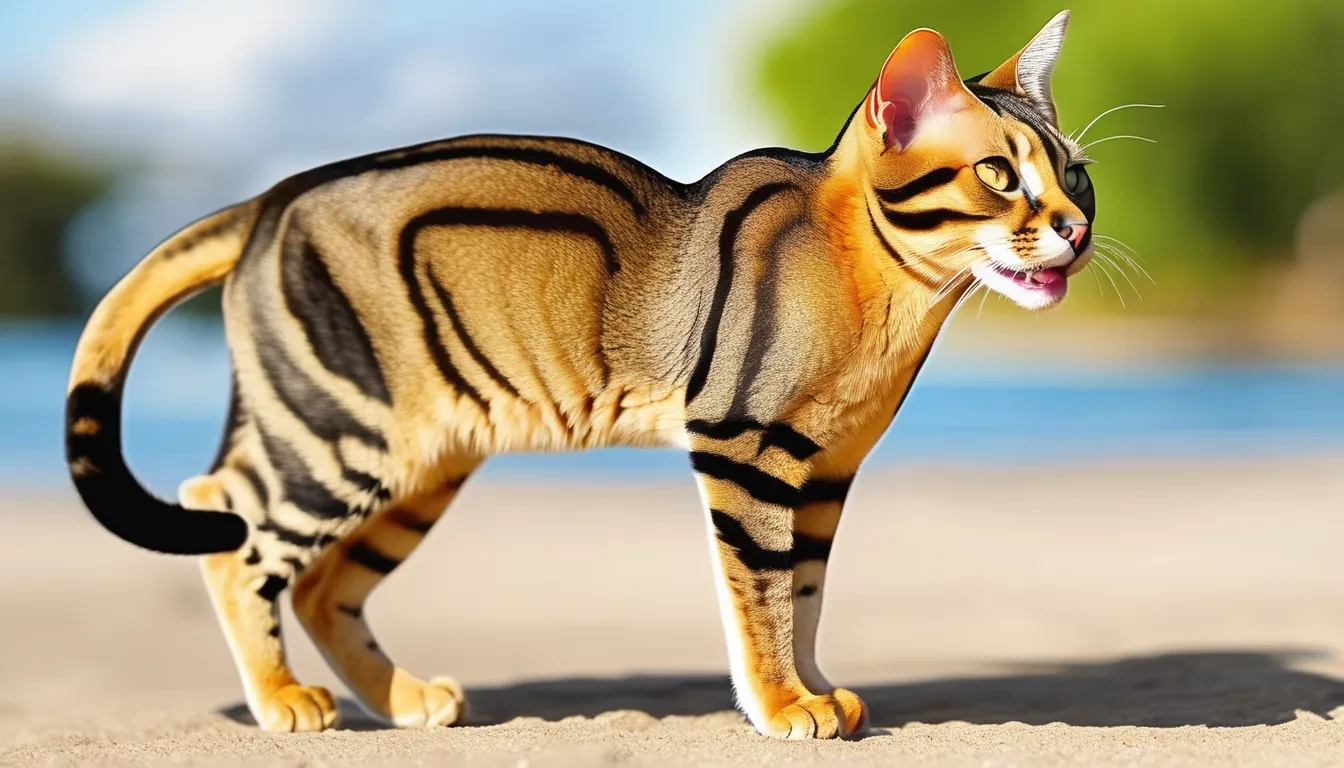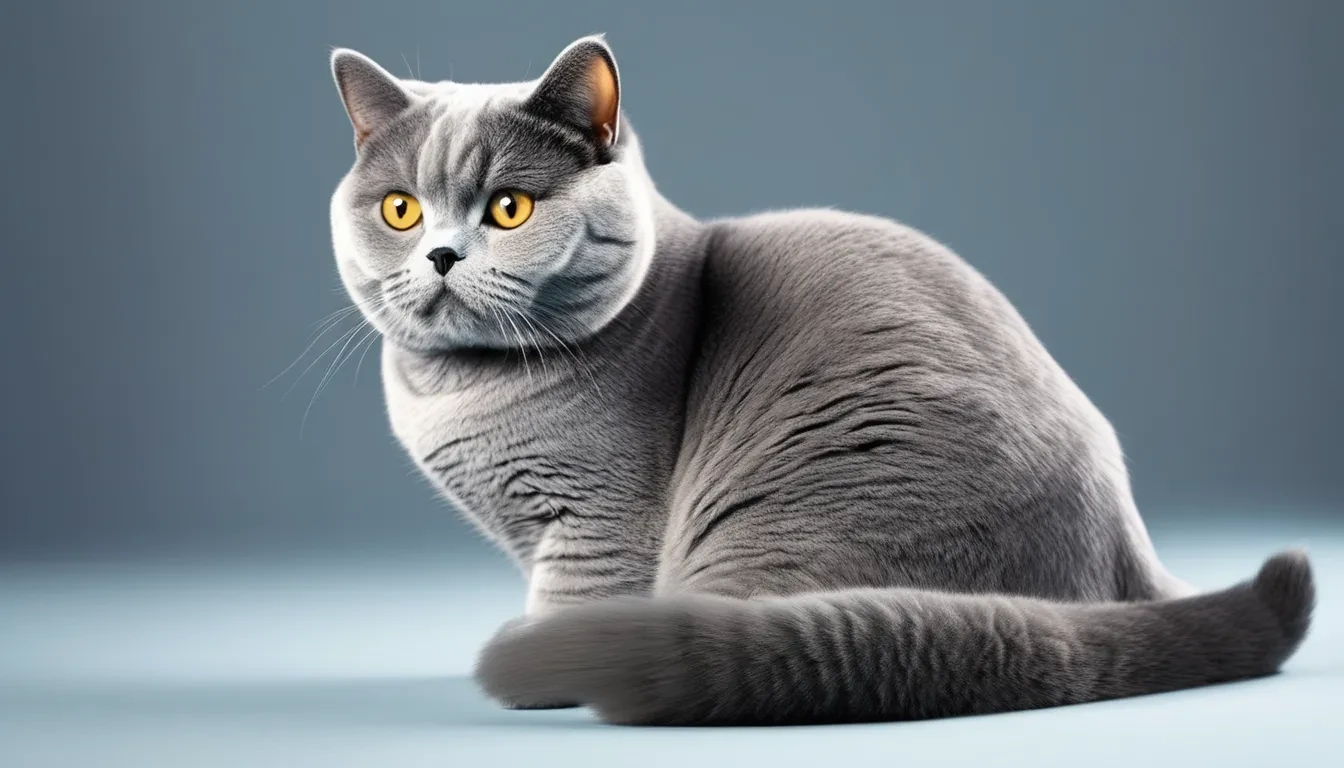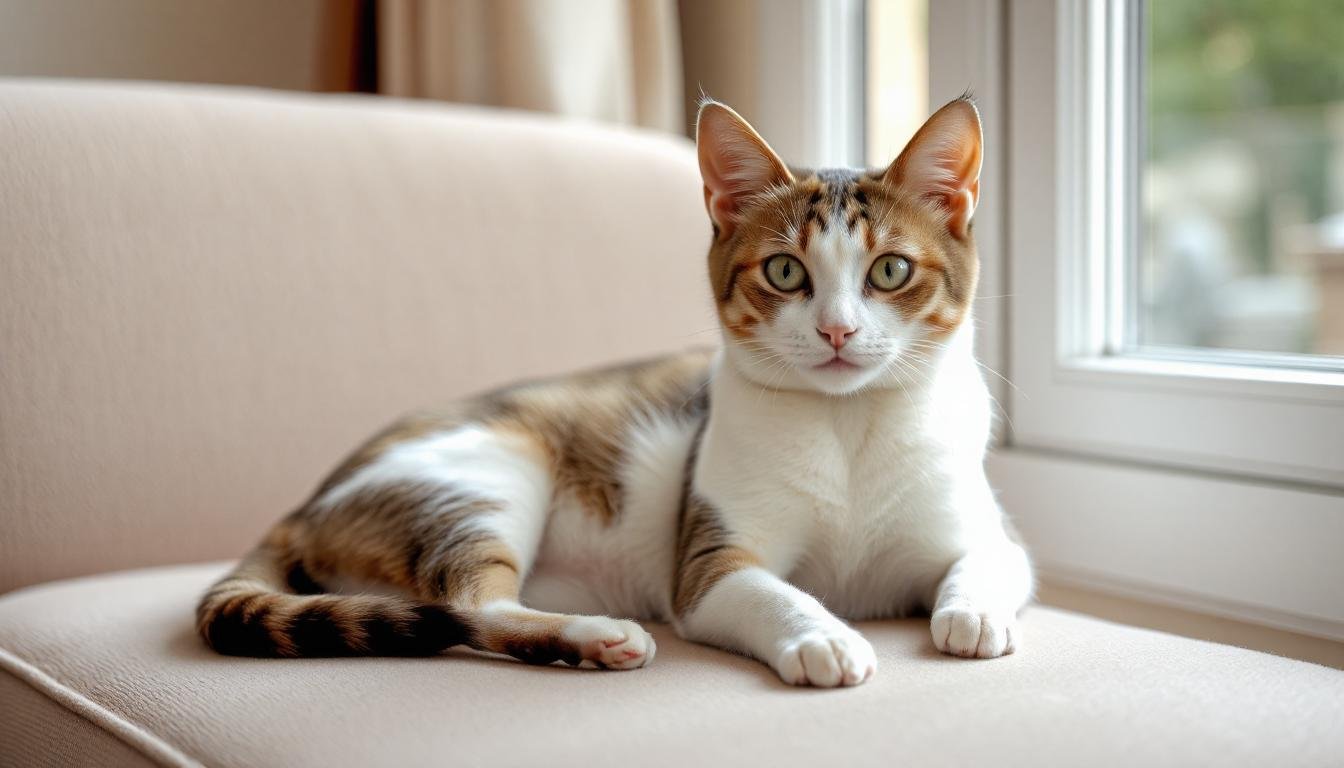If you’re looking for a cat that embodies both elegance and adventure, the Chausie might be your perfect match. These captivating felines, with their striking, spotted coats, wild-like appearances, and energetic personalities, often draw comparisons to miniature jungle cats. But don’t let their exotic looks fool you: Chausie cats are known for their affectionate, playful, and often mischievous personalities.
A Journey of Breeding: The Chausie Cat’s Origins
The Chausie cat’s story is one of careful breeding and a touch of wildness. It all began in the 1960s when breeders in the United States set out to create a domestic cat breed that resembled the elegant, athletic appearance of the jungle cat. They crossed domestic cats with the African wildcat, known for its striking spotted coat and its agile, athletic build.
Early breeders carefully selected cats with desirable characteristics, focusing on maintaining the breed’s wild-like appearance and developing its unique personality. Over time, the Chausie emerged as a distinct breed, known for its striking appearance, its playful, energetic nature, and its affectionate, engaging personality.
The Chausie: A Blend of Wildness and Domesticity
A Striking Spotted Coat: The Chausie’s most distinctive feature is its striking, spotted coat, reminiscent of its jungle cat ancestor. This unique pattern, often described as “marbled” or “swirled,” comes in a variety of colors, including brown, black, silver, and cinnamon. The spots can be either solid or ticked, with the ticked pattern creating a more shimmering, almost iridescent effect.
Muscular Build and Expressive Eyes: The Chausie has a medium-sized, muscular build with strong legs and a sleek, athletic body. Their rounded heads and expressive eyes, often almond-shaped, contribute to their wild-like appearance. The eyes come in a variety of colors, including green, gold, and hazel.
A Variety of Coat Types: The Chausie comes in two coat types: short-haired and long-haired. Both coat types feature the distinctive spotted pattern, each offering its own charm and visual appeal.
A Case Study: The Adventures of Simba
Simba, a 5-year-old Chausie, is a perfect example of the breed’s unique personality. His owner, David, describes him as “a playful goofball with a heart of gold.”
“Simba is always up for a good time,” David laughs. “He loves to play fetch with his toys, and he’s even learned to jump through hoops. He’s a bit of a comedian, always finding new ways to entertain us.”
Simba’s spotted coat adds to his unique charm. “He’s like a little jungle cat,” David says. “His coat is soft and smooth, and it’s always fun to brush him and watch him purr with contentment.”
Personality and Temperament:
Affectionate and Playful: Chausie cats are known for their affectionate and playful personalities. They crave human companionship and love to be petted and cuddled. They’re often described as being “dog-like” in their loyalty and devotion to their owners, often following them around the house and participating in their daily activities.
Active and Energetic: Chausie cats are active and energetic. They enjoy interactive games, chasing toys, and exploring their surroundings. They often require more exercise and playtime than other breeds.
Intelligent and Curious: Chausie cats are highly intelligent and curious, eager to learn new things and explore their environment. They’re often quick to pick up tricks and enjoy puzzles and games that challenge their minds.
The Chausie: A Detailed Look
A Breed with a Short History: The Chausie is a relatively new breed, having been recognized by cat registries in the late 20th century. However, the breed has quickly gained popularity for its striking appearance and its affectionate nature.
A Rare Breed: The Chausie is considered a rare breed, as it takes careful breeding programs to maintain its distinctive spotted coat and ensure its health.
Health and Lifespan:
Generally Healthy: Chausie cats are generally a healthy breed. They’re known for their robust constitution and strong immune systems. However, they’re prone to some common feline health issues, such as hypertrophic cardiomyopathy (HCM) and polycystic kidney disease (PKD). Regular veterinary checkups and preventive care are crucial to ensure their well-being.
Lifespan: Chausie cats typically have a lifespan of 12 to 15 years, with proper care and attention.
Grooming:
Minimal Grooming: The Chausie’s short coat requires minimal grooming. A weekly brushing with a soft brush is usually sufficient to remove loose hair and keep their coat healthy and shiny.
Living with a Chausie:
Active Lifestyle: Chausie cats are active cats and need plenty of exercise and mental stimulation. Provide them with climbing trees, scratching posts, and interactive toys to keep them entertained. They often require more playtime than other breeds, so make sure you’re prepared for their high energy levels.
Socialization: Early socialization is crucial for Chausie cats to develop into well-adjusted cats. Introduce them to other pets and people from a young age to help them become comfortable in different environments.
Is the Chausie Right for You?
The Chausie is an excellent choice for owners seeking a playful, affectionate, and intelligent companion. They’re adaptable and social cats, making them well-suited for families with children and other pets. However, Chausie cats are high-energy cats with specific needs. Consider these factors before welcoming a Chausie into your home:
- Are you ready for a playful and energetic cat who needs a lot of exercise and playtime?
- Can you provide a stimulating environment with plenty of climbing opportunities and toys?
- Do you have the time and resources to meet their needs?
If you can answer “yes” to these questions, then a Chausie might be the perfect fit for you.
The Chausie: A Unique and Rewarding Experience
The Chausie is more than just a cat with a spotted coat. They’re a unique and captivating breed with a personality that’s both charming and endearing. Their playful nature, intelligence, and affectionate temperament make them an excellent choice for cat lovers seeking a loyal and rewarding companion.
A Look Deeper into the Chausie’s Personality
The Independent Side of the Chausie: While they’re known for their affectionate nature, Chausie cats can also be quite independent. They enjoy their own company and often find ways to entertain themselves. This independent streak makes them well-suited for owners who are out of the house for part of the day, as long as they have adequate stimulation and enrichment.
The Adventurous Chausie: These cats are naturally curious and love to explore. They’re often found venturing into new areas of the house, investigating objects, and climbing to high places. If you have a cat tree or other climbing structures, your Chausie will likely make good use of them. They may even enjoy outdoor adventures in a safe, enclosed space.
The Curious and Inquisitive Nature: Chausie cats are highly intelligent and observant. They’re often seen watching their owners with keen interest, observing their routines and activities. This curiosity makes them entertaining companions, as they’re always learning and adapting to new situations.
Training a Chausie:
A Quick Learner: Chausie cats are relatively easy to train, thanks to their intelligence and eagerness to please. They can learn simple tricks, such as fetching toys, coming when called, and jumping through hoops.
Positive Reinforcement: The key to training a Chausie is positive reinforcement. Use treats, praise, and play to motivate them and reward desired behaviors.
The Importance of Socialization:
Social Butterflies: Chausie cats are known for being social cats, but early socialization is still important for their well-being. Introducing them to different people, pets, and environments from a young age helps them develop into confident and well-adjusted adults.
Avoiding Negative Experiences: It’s crucial to ensure that Chausie cats have positive early experiences with other animals and people. Negative experiences can lead to fear, anxiety, and aggression.
Conclusion:
The Chausie is a captivating breed with a unique and endearing personality. Their spotted coat, playful nature, and affectionate temperament make them a truly special companion. If you’re looking for a cat who’s both striking and full of character, the Chausie might just be the perfect fit for you.









